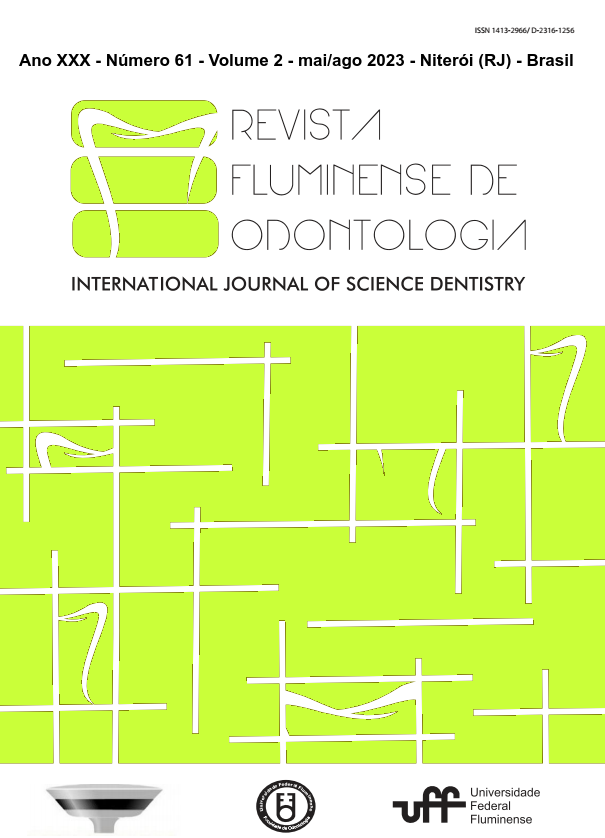Biological sealing aspects surrounding anterior crowns on dental implants: clinical and photographic cases report
DOI:
https://doi.org/10.22409/ijosd.v2i61.57026Abstract
The biological sealing (BS) around implants is a dominant factor to determine the long-term success of peri-implant health. There are several features of the BS around implants in common with the soft tissue attached to teeth, such as the presence of crevicular fluid, acquired pellicle, epithelium; otherwise, the quality of the BS around implants is weaker compared with the junctional epithelium of natural teeth. Then, this article aimed to describe three cases report showing the presence of a BS (cuticle-crevice fluid-acquired pellicle) around the fixed crowns on dental implants in the anterior zone, through photographic analysis. It was used a Nikon 8100 camera with a 105 mm macro lens and a Macro Ring circular flash. A photographic profile examination was made always showing the clinical case and, specifically, the focal point in the crown-gingival tissue (prosthesis boundary and peri-implant tissue), highlighting the anatomical gingiva on the ceramic prosthetic crown at an angle between 140 to 160 degrees. Although cases 1 and 2 had 1-year follow-up and case 3 around 4 years, the common findings for all treatments done were: (i) oral rehabilitation with crowns on dental implants; (ii) patients satisfied with the esthetic and functional result; (iii) stability of the soft tissue around the crowns; (iv) all the patients had a good oral hygiene; (v) presence of a thin membrane associated with the acquire pellicle, similar to an annular cuticle, which we named cuticle-acquired pellicle complex or tertiary cuticle or prosthetic-implant cuticle. This complex (cuticle-crevicular fluid-acquired pellicle) is suggested to be the responsible by the BS on dental implants. Moreover, the cuticle (epithelial part in the peri-implant sulcus), although similar to teeth, may be considered a tertiary pellicle due to be found on ceramic crowns on dental implants, differently of the primary and secondary pellicle. Whitin the limitation of these three cases reports, the BS was reported and can be introduced the new concept of the “cuticle-crevicular fluid-acquired pellicle complex” or “prosthetic-implant cuticle”. Keywords: Dental implants; single crown; biological sealing; biofilms; pellicle; acquired pellicle; saliva; gingival crevicular fluid.Downloads
La data di download non è ancora disponibile.


